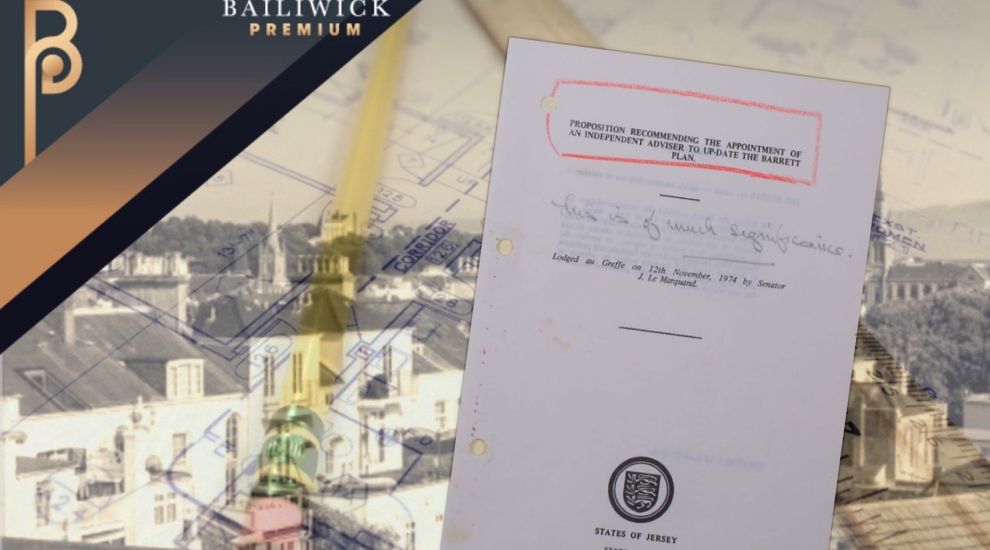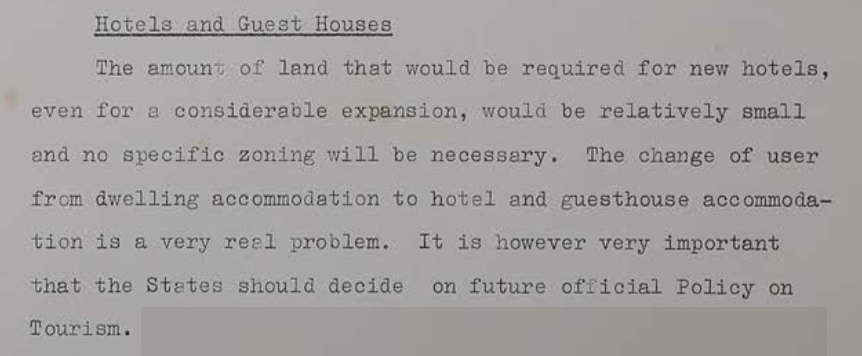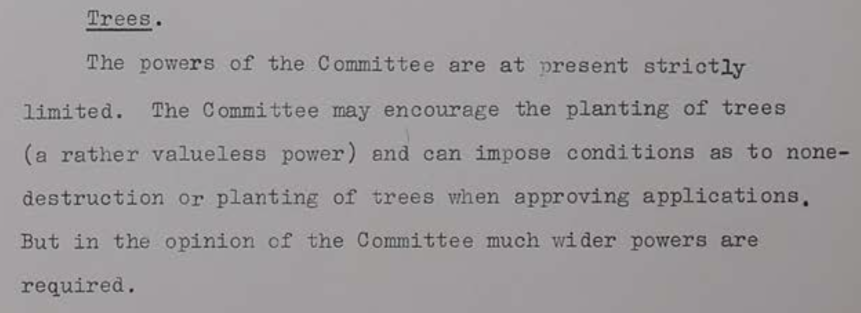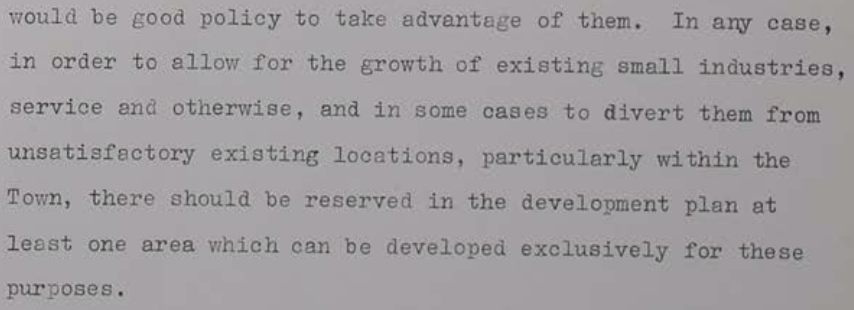


From warnings about homes being turned into hotels, and development "density", to tree protection recommendations...there are many parallels between "long-term" planning policies being drawn up in 1961 and now.
60 years ago this year, the then-'Natural Beauties' Committee, which was responsible for planning at the time, asked W.H. Barrett to produce an Island Survey Interim Report before they could submit development plans for the island.
His report included several “long-term” recommendations, the majority of which were approved by the States Assembly.
However, six decades on, a lot of things have changed... or perhaps not... as Express discovered when comparing the recommendations with the situation today...

Back in 1961, the transformation of homes into hotel and guesthouse accommodation was a “very real problem”.
Flash forward to 2021 and the situation has been flipped on its head with the disappearance of hotels to housing developments causing concern for the viability of Jersey’s air and sea links.
Since 2018, the island has lost just under 300 beds, continuing a trend that has been ongoing for several years, and there is a seemingly record number of hotels slated for redevelopment. The Mayfair, Apollo, Savoy, Stafford, Revere and Miramar Hotel could all be demolished if plans are approved, while part of the Fort d’Auvergne hotel is already being knocked down after plans to build 25 flats were approved.
There are currently around 10,500 beds available in the island - nearly 7,600 of which are split across 56 hotels, according to figures presented by the Economic Development Minister Senator Lyndon Farnham earlier this year.
1,194 other beds are available across 349 registered self-catering apartments with the maximum occupancy for the campsite, 739, making up the total. Meanwhile, 180 local properties are currently advertised on AirBnB.
The number of hotel rooms has been the subject of discussions between Ports of and air and sea operators.
CEO Matt Thomas confirmed they had sought assurances that the availability of hotel beds on the island would not “constrain” the future growth of routes.

To ensure the “visual quality” of the island didn’t become tainted by “every isolated new building erected outside the Town”, Mr Barrett recommended future developments be based on “greater density and compact grouping."
His plans for housing included 600 homes in or near town on new sites as well as 700 on redeveloped sites in town, with 300 in “villages” near Parish Halls and 600 in new areas.
In 2021, it seems the island has gone too far in terms of density. Earlier this year, the Environment Minister sought a Planning Inquiry over two “very large-scale developments” in town, with the Constable of St. Helier, Simon Crowcroft, warning there was a “risk of town crowding."
The first application relates to proposals to demolish the Mayfair Hotel to make way for 137 one-bedroom and 67 two-bedroom flats.
The second application related to Andium Homes’ plans to build 189 one-bedroom and 82 two-bedroom flats on the site of the former Ann Street Brewery, which were later withdrawn.

Meanwhile in St. Saviour, Constable Sadie Le Sueur-Renard has vehemently voiced her opposition to proposals for up to 212 homes on six fields over three sites in her parish.
“I am fighting to have these homes not built in St Saviour because we cannot take any more in this parish,” she told the States Assembly in June. “There are other parishes that could do with the homes and could do with the rates. St. Saviour do not want any more homes, but everybody wants one, and where are you going to put them? Not in St. Saviour.”
If the draft Island Plan is approved unaltered, up to 582 homes – although the target is 450 - will be built across seven parishes with 18 fields lost. The total land built on will be 71.7 vergées, roughly equivalent to 30 football pitches.

Mr Barrett called for “much wider powers” for the planting and preservation of trees.
60 years later, the Environment Minister, Deputy John Young, proposed amendments to the Planning and Building Law, which would see trees included as part of the definition of a development.
Meanwhile, the Minister would be able to make decisions about certain trees' fate. While the proposals were described as a “using a sledgehammer to crack a nut” by the former Environment Minister, Deputy Steve Luce, they were recently adopted in principle by the States Assembly, so Mr Barrett might soon get his wish.

The question of sports facilities was already in Mr Barrett’s mind in 1961 with the Committee recommending a specific policy for them.
60 years later, the Government revealed a £100m plan to dramatically change the sports landscape in the island over the next 10 years.
The plans will see sport leave the Fort for good in 2022 with the first of the new facilities up and running by around 2024.
Mr Barrett’s proposals for an “all-purpose sports stadium” over the Gas Works site with Springfield turned into a park for the northern part of town, were however not adopted.

Mr Barrett proposed the establishment of one or more Trading Estates to allow for the growth of existing small industries, outside of the leading ones at the time, agriculture, tourism and building, and divert them from “unsatisfactory existing location”.
The Committee therefore sought approval from the States to set aside 34 vergées of land at Rue des Pres where a trading estate was later established. Mr Barrett also recommended a second and smaller estate on the west of Goose Green Marsh.
Mr Barrett recommended using the north end of St. Ouen’s Bay for residential and weekend bungalows, which the Committee endorsed saying it wasn’t “unreasonable”. Meanwhile he called for the North coast bays which were in a “completely virgin state” to be preserved as such.

He also took an interest in local roads and recommended the creation of a road connecting the bottom of Beaumont Hill to the Bel Royal Roundabout as well as the widening of St. Aubin’s Road from La Haule to Bel Royal to allow parking.
He also warned about the future increases in the number of cars and called for a new route from Georgetown to the Weighbridge going via Plaisance Road, Peel Road, the old railway track to Green Street and a tunnel under Fort Regent.
He said that if those proposals were approved a pedestrian precinct in the heart of St. Helier and a multi-storey car park “just inside or very close to town” would be recommended.
Comments
Comments on this story express the views of the commentator only, not Bailiwick Publishing. We are unable to guarantee the accuracy of any of those comments.